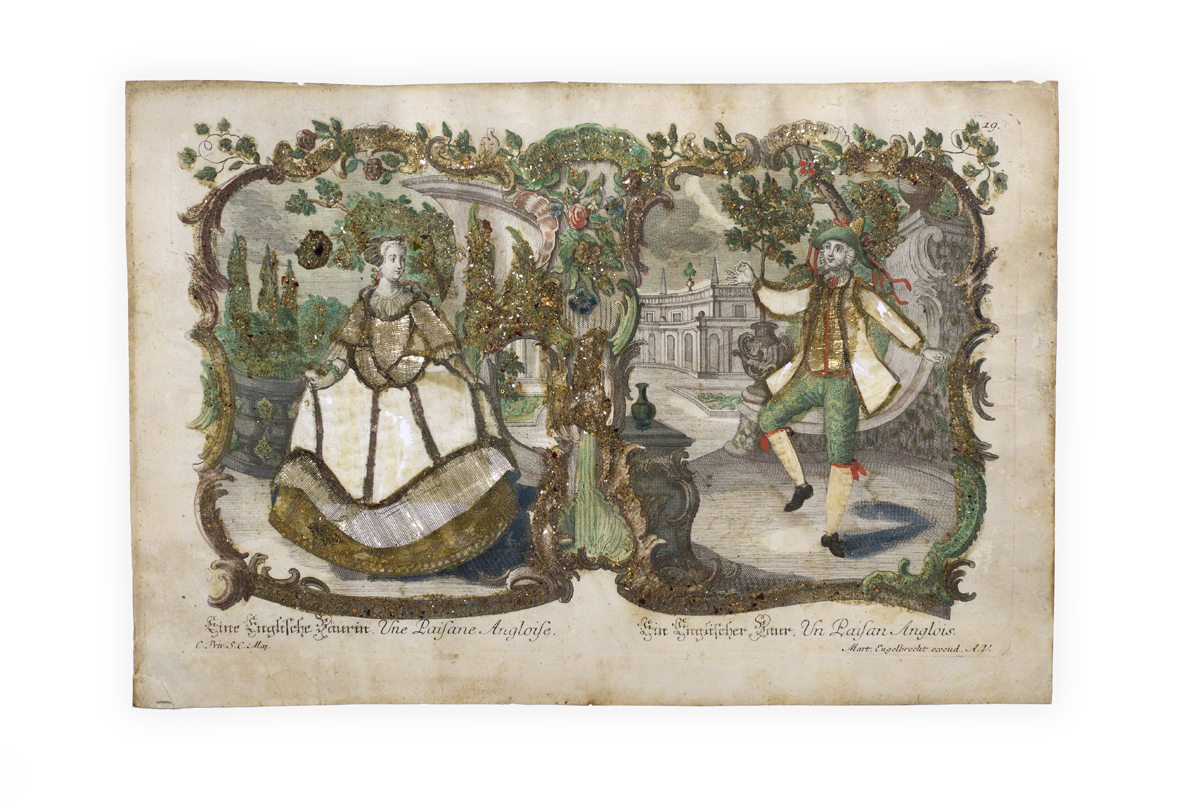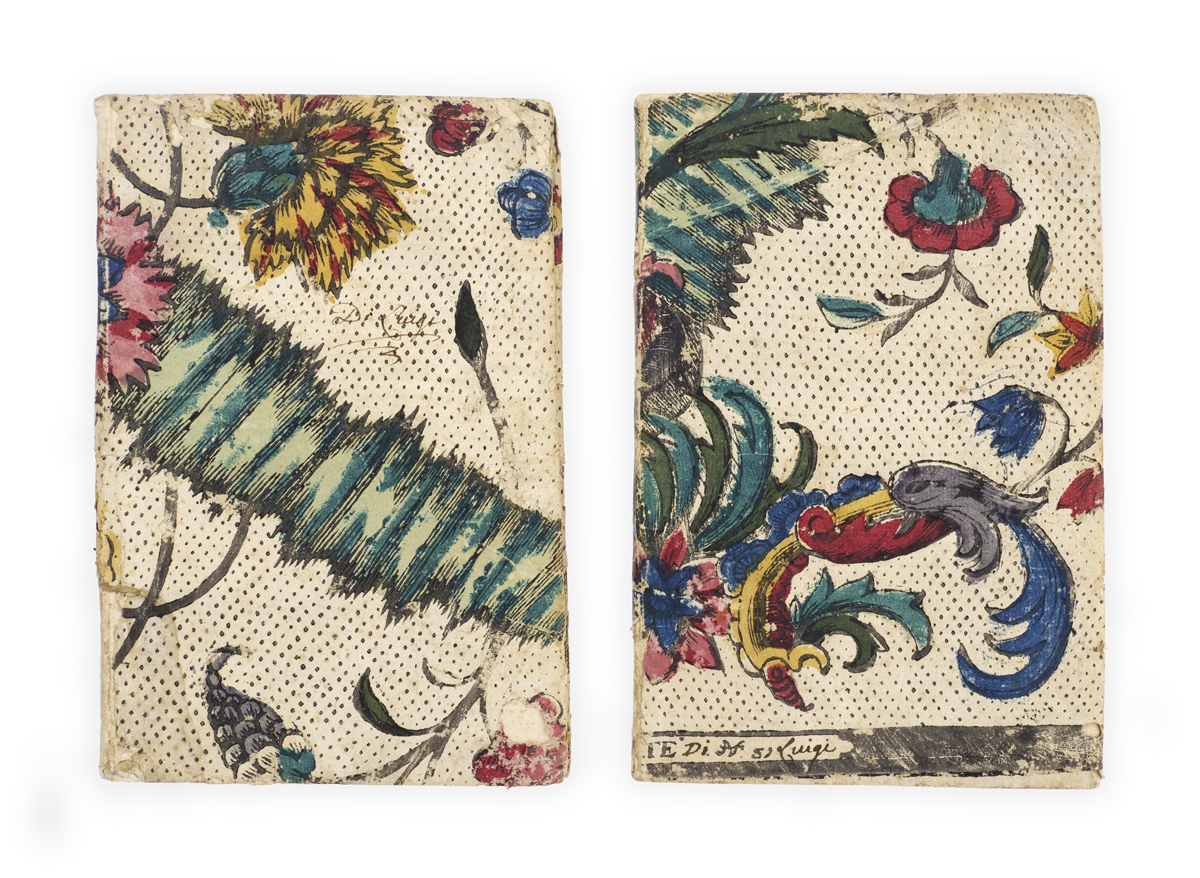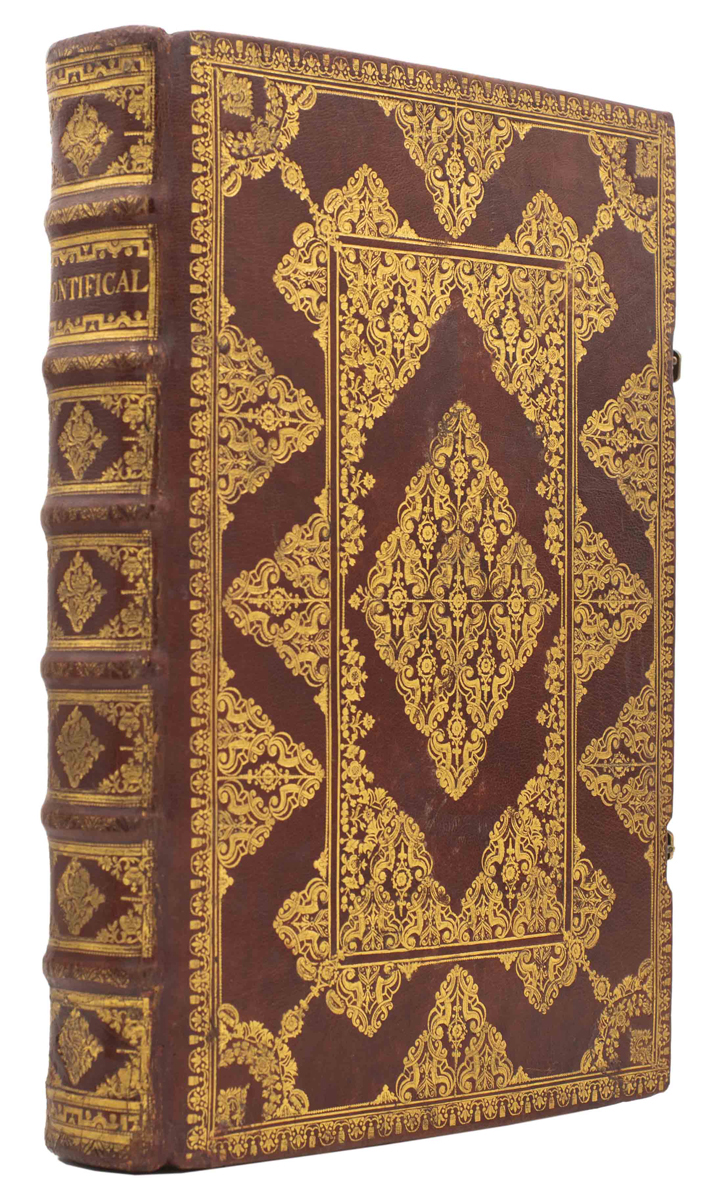
WELL-DRESSED ENGLISH ‘PEASANTS’
[ENGELBRECHT, Martin.]
Eine Englische Bäurin. Une paisane Angloise. Ein Englischer Baur. Un paisan Anglois.
Augsburg, Martin Engelbrecht, [c. 1740?].
Engraving on paper (sheet: 217 x 322 mm; plate: 187 x 294 mm) depicting a man and woman in a garden with captions below in German and French, partly hand-coloured, some metallic ‘glitter’ applied to some areas, parts of their costumes cut out and backed with white and metallic fabric; number ‘19’ to top right, ‘C. Priv. S.C. Maj.’ to bottom left, ‘Mart. Engelbrecht excud. A[ugustae]. V[indelicorum].’ to bottom right; slightly browned and marked, a few small repairs to blank verso, some holes to fabrics.

Added to your basket:
Eine Englische Bäurin. Une paisane Angloise. Ein Englischer Baur. Un paisan Anglois.
A wonderful engraving by the Augsburg engraver Martin Engelbrecht (1684–1756) depicting a finely-dressed Englishwoman and Englishman – each somewhat incongruously captioned ‘an English peasant’ – placed within a formal garden setting.
The splendour of the couple’s attire is here enhanced not only with some hand-colouring but by cutting out parts of their clothing and backing the découpé areas with white, silver, and gold cloth. The effect is particularly striking for the man, whose jacket and stockings are of white silk and whose waistcoat and hat glitter in splendid gold. Further metallic ‘glitter’ has been applied to the rococo frame enclosing the scene and to the trees in the garden, so that the whole offers a sparkling spectacle when held up to the light.
Martin Engelbrecht joined the Augsburg publishing house founded by his brother Christian (1672–1735) and in 1719 acquired an imperial privilege, which was renewed in 1729 and 1739. After his brother’s death, he ran the publishing house alone and expanded it significantly. His privilege is reflected here at bottom left with the abbreviation for ‘Cum Privilegio Sacrae Caesareae Majestatis’.
We have been unable to trace another copy. This print does not obviously appear to come from any of the works ascribed to Engelbrecht in Hiler’s Bibliography of Costume for example.

